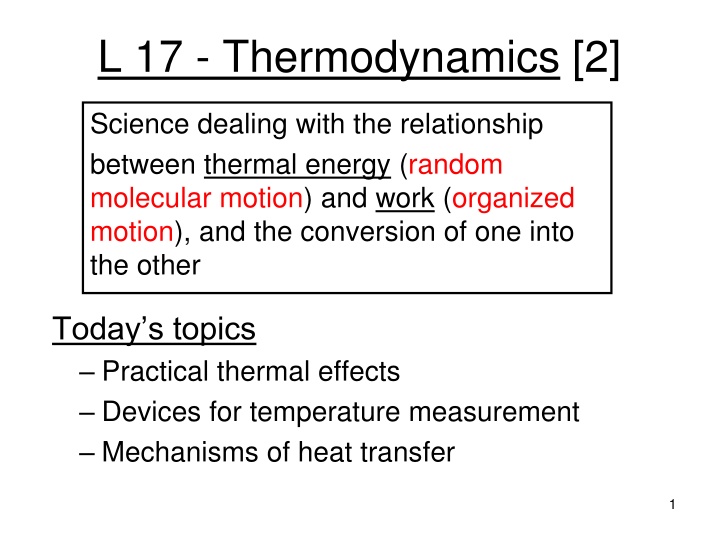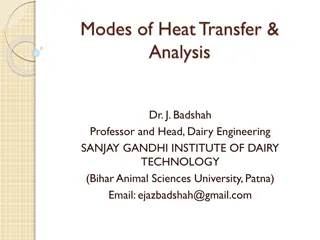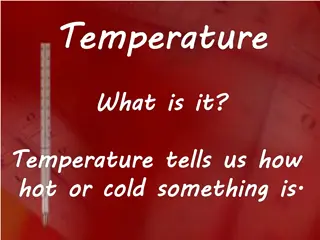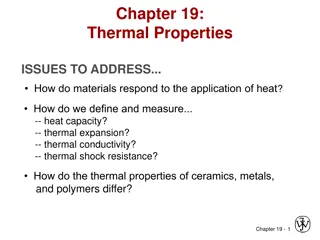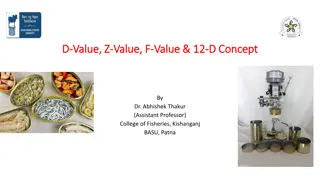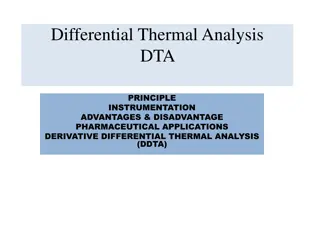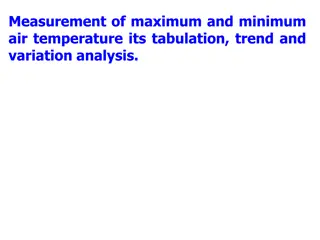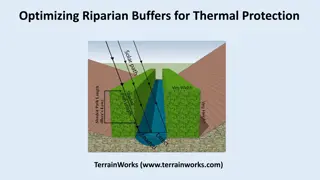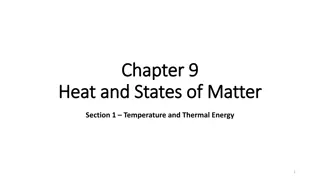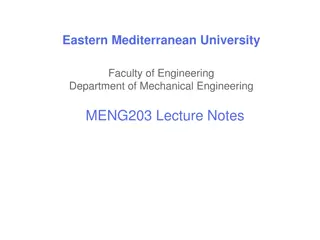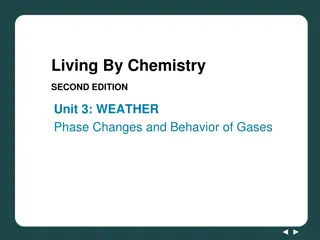Practical Thermal Effects and Devices for Temperature Measurement
Exploring the relationship between thermal energy and work in thermodynamics. Learn about practical thermal effects, mechanisms of heat transfer, and devices like thermocouples used for temperature measurement. Understand how thermal expansion impacts various materials and why it's crucial for designing infrastructure. Discover the applications of thermocouples in safety devices.
Download Presentation

Please find below an Image/Link to download the presentation.
The content on the website is provided AS IS for your information and personal use only. It may not be sold, licensed, or shared on other websites without obtaining consent from the author.If you encounter any issues during the download, it is possible that the publisher has removed the file from their server.
You are allowed to download the files provided on this website for personal or commercial use, subject to the condition that they are used lawfully. All files are the property of their respective owners.
The content on the website is provided AS IS for your information and personal use only. It may not be sold, licensed, or shared on other websites without obtaining consent from the author.
E N D
Presentation Transcript
L 17 - Thermodynamics [2] Science dealing with the relationship between thermal energy (random molecular motion) and work (organized motion), and the conversion of one into the other Today s topics Practical thermal effects Devices for temperature measurement Mechanisms of heat transfer 1
Thermal Energy and Work The random motion of the atoms is thermal energy The sum of all the energies of all the atoms is called the internal energy The upward motion of the piston is work energy Some of the internal energy is used to do work in lifting the piston 2
Thermocouples 180 F two different metals AMPS 3
Thermocouples- measure Temp. Is composed of 2 wires of different metals welded together when the tip gets hot an electrical current is produced The current is proportional to the temperature It can be used over a wide range of temperatures 500 F 4
Thermocouples used as safety devices a thermocouple is used in gas heaters, dryers, and fireplaces to protect against explosions a thermocouple is placed in the pilot light as long as the pilot light is on, the thermocouple is hot and current flows a circuit detects the current and allows the main gas valve to open if the pilot light is out, the circuit prevents the main gas valve from opening Thermocouple Pilot light current gas 5
Thermal Expansion L1 Metal bar at T1 Metal bar at T2 > T1 L2 The length of a bar of metal increases when it is heated Actually, all dimensions expand by the same percentage Expansion must be taken into account when designing roads and bridges in climates that vary significantly from winter to summer all materials expand, steel, concrete, asphalt . . . 6
Thermal Expansion Most substances expand when heated We use a parameter, called the coefficient of thermal expansion to quantify this effect The length of a metal bar increases from L0 to L ( L = L L0), when it is heated from T1 to T2 ( T = T2 T1) Change in length = L = L0 T For copper, = 17 10-6 per deg. C Change L = (17 10-6 per C)(1 m)(100 C-22 C) = 0.0013 m = 1.3 mm 7
Coefficients of linear expansion (per deg C) 23 10 6 19 10 6 9 10 6 80 10 6 51 10 6 29 10 6 11 10 6 10 10 6 SUBSTANCE aluminum brass glass rubber Ice lead steel concrete 8
Thermal expansion problems No room for thermal expansion result buckling 11
Areas and volumes expand too! cold hot cold hot 12
Does the whole get bigger or smaller when heated? cold hot Both the inner and outer diameters increase when the ring is heated 13
Hot water causes the lid to expand, making it easier to unscrew it. 14
Fire sprinklers are triggered by thermal expansion of a liquid 15
Bi-Metal strips thermal expansion of metals is put to good use in a bi-metallic strip. it is two strips of different metals bonded together metal A metal B 16
Heating a Bi-metal strip when heat is applied to the bi-metallic strip, both metals expand, but by different amounts! result: The metal with the higher thermal expansion coefficient is on top The red side expanded more than the blue side, so the strip bends toward the blue side. 17
Bi-Metal strip thermal switch used to turn power off when a preset temperature is reached ON OFF Used in coffee makers and hair dryers 18
Heat Flow HEAT HOT COLD Heat is the energy that flows from one body to another because of their temperature difference There are 3 ways that heat can be transferred: convection conduction radiation 19
Heat transfer by Convection heat is transferred from one location to another by the bulk movement and subsequent mixing of liquids or gases (fluids), but NOT in solids. when water is boiled, hot water at the bottom rises and mixes with cooler water at the top Hot air rises: in winter, want hot air in at lower level in summer, cold air in at upper level convection currents 20
Heat transfer by conduction heat is transferred directly through a material, with no bulk movement of material only energy moves (molecules in a solid are not free to move, but can vibrate) iron is a poor conductor of heat 21
heat conduction Cross sectional area A L HOT COLD Heat Flow Heat Flow rate depends on A / L and a property unique to the material, called thermal conductivity22
Thermal Conductivity: a parameter that quantifies the ability of a material to conducting heat. Material Thermal conductivity 14 - 400 0.15 0.8 0.04 0.025 0.01 Metal Thermal Conductivity 406 385 205 109 80 50/14 metals wood glass wool Goose down Silver Copper Aluminum Brass Iron Steel /SS Styrofoam 23
Heat transfer by Radiation The warmth you feel from the sun is the sun s thermal radiation It travels through the vacuum of space to reach earth, no material is necessary (takes 8 minutes) you can feel its effects even though you cannot see the radiation. you can feel the thermal radiation from a fireplace Objects not in contact with liquids gases or other solids loose heat by radiation 24
Thermal Radiation The amount of thermal radiation emitted by an object is proportional to its temperature raised to the fourth power ~ T4 Doubling the temperature will increase the amount of thermal radiation by 24 = 2 x 2 x 2 x 2 = 16 More on this next lecture 25
